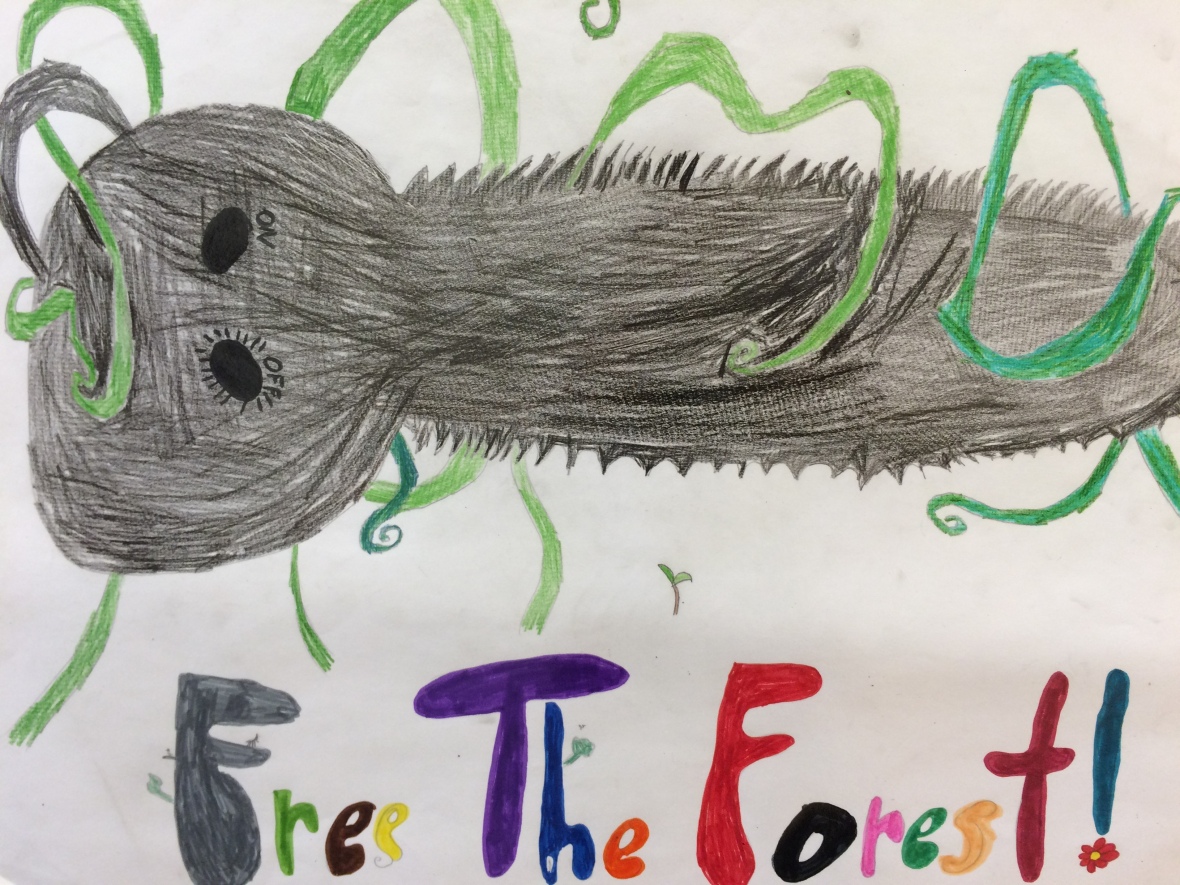
As part of the DCPS Visual Arts Cornerstone examining the theme of “Becoming,” students in both 4th and 5th grade created powerful advocacy art to highlight a social issue that resonated with them personally. Through performance, installation, street-art stencils, posters, raps and skits, each artist identified a communication medium that would best express their opinions, grievances or solutions to the issue at hand and set out to create a work of art that was both visually and emotionally compelling.
Our 2D works are currently on display “salon style” on the 2nd floor of the East building.




Before diving into our own creative process, we began our in depth unit of study by participating in a Close Viewing of Ernest Withers’ photograph from the Memphis Sanitation Strike entitled, I Am A Man, Sanitation Workers Strike, Memphis, Tennessee, (March 28, 1968). Students engaged in a variety of visual annotation strategies to document their thoughts and ideas about the provocative piece.


Visual annotation involves creative note taking, doodling, and intentional mark making on an image. Students are encouraged to highlight points of interest, draw arrows, and take notes about what they observe. The artists above used many symbols to annotate their thoughts and ideas in a way that made sense to them.




See/Think/Wonder is another Artful Thinking Routine used during Close Viewing. Students look closely at an image and then focus in on the things they specifically see, think, and wonder about the work. By breaking the image down, they are able to use many clues to piece together the story of the work of art from their own point of view and context.





Taking note of a variety of ways in which those before us have stood up for what they believed in, even in the face of danger, we deepened our context about the importance and sometimes risky business of speaking out in the name of injustice.

We covered topics ranging from the Civil Rights protests addressing unfair working conditions, vegetarianism, oil spills, animal abuse, adoption, gun control, gang violence, pollution and the Black Lives Matter movement. Below are a few examples of protest art, or advocacy art, that use the power of the visual image to communicate a message. A few of the examples highlight the local or even global impact of a few DC art installations. It pays to make a statement in the Nation’s Capital!






Students took true ownership of their topics and became artistic advocates for their causes. Embracing the idea that the artists are the creative problem solvers of our time, students found bold ways to conceptualize heavy content and use powerful words and imagery to articulate their ideas creatively.
Check out this provocative rap video made by some of our talented 5th graders!

T-Shirt designs became walking advertisements for social change



We learned how to use Xacto Knives to carve stencils for spray painting in the style of street artists like Banksy.








What is something you would be willing to stand up for?
What if you were afraid and it was dangerous, would you still speak out?
What are some other creative ways to spread truth and knowledge about an important issue?












Absolutely A-M-A-Z-I-N-G : )
I took some friends up to see the show last night. Very impressed. One said we should contact Wash Post to cover it. I’m going to look into it. Sent from Yahoo Ma
This was an excellent project! It made the kids think through their art on such a high level. I know they were excited about it and it looks so good.
Oh Wow!!! powerful art !